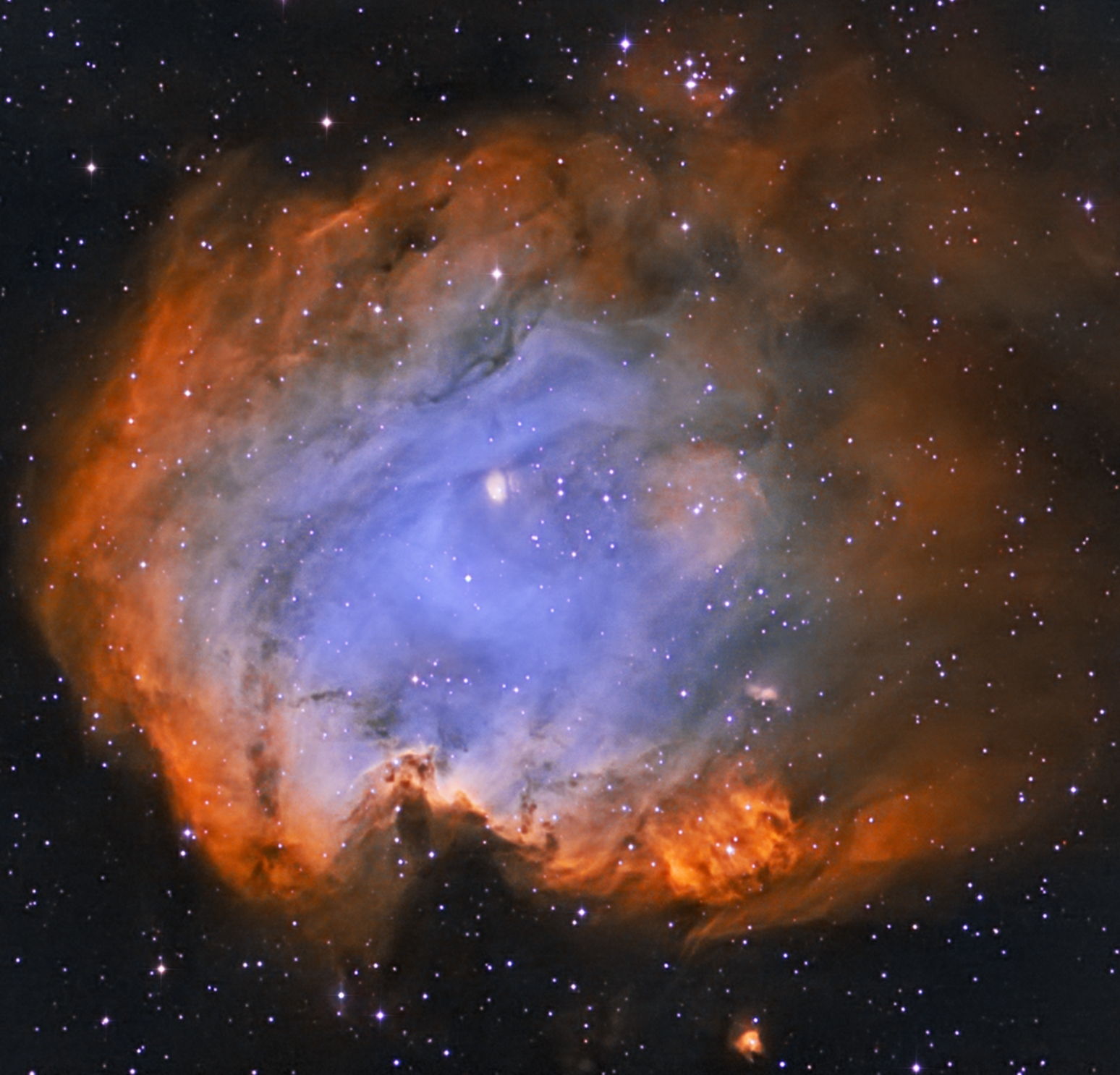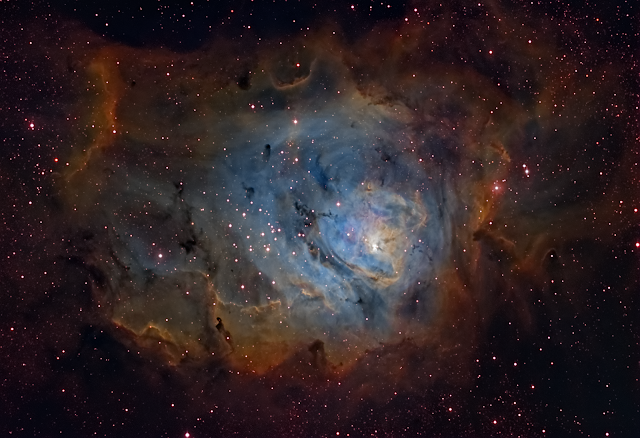Sharpless 115 stands just north and west of Deneb. Noted in the 1959 catalog by astronomer Stewart Sharpless (as Sh2-115) the faint but lovely emission nebula lies along the edge of one of the outer Milky Way's giant molecular clouds, about 7,500 light-years away. Shining with the light of ionized atoms of hydrogen, sulfur, and oxygen in this Hubble palette color composite image, the nebular glow is powered by hot stars in star cluster Berkeley 90. The cluster stars are likely only 100 million years old or so and are still embedded in Sharpless 115. But the stars' strong winds and radiation have cleared away much of their dusty, natal cloud. At the emission nebula's estimated distance, this cosmic close-up spans just under 100 light-years.
For collecting the photons i wanted , i had to face extremely bad atmospheric conditions, such as high humidity and temperature, in all 5 nights that needed for completion the whole project.
It is a beautiful object but very faint particulary in OIII and SII with complex structures.
Hope you like it ...!
Instruments and exposure data:
Starizona MicroTouch autofocuser
W.O ZS80 ED
SBIG ST10XME CFW9
Meade DSI
Filters: Ha 5nm Astrodon_S[II] 8nm Baader_O[III] 3nm Astrodon
Sky-Watcher EQ6 Pro
Ha:60*10min bin1x1
S[II]:19*15min bin1x1
O[III]:23*15min bin1x1_35*10min_bin1x1
Total exposure time:26h20min
Astrobin Image of the Day 31 Aug 2014
W.O FLT110 with dedicated TMB field flattener
FeatherTouch 3'' focuserStarizona MicroTouch autofocuser
W.O ZS80 ED
SBIG ST10XME CFW9
Meade DSI
Filters: Ha 5nm Astrodon_S[II] 8nm Baader_O[III] 3nm Astrodon
Sky-Watcher EQ6 Pro
Ha:60*10min bin1x1
S[II]:19*15min bin1x1
O[III]:23*15min bin1x1_35*10min_bin1x1
Total exposure time:26h20min
Astrobin Image of the Day 31 Aug 2014






















